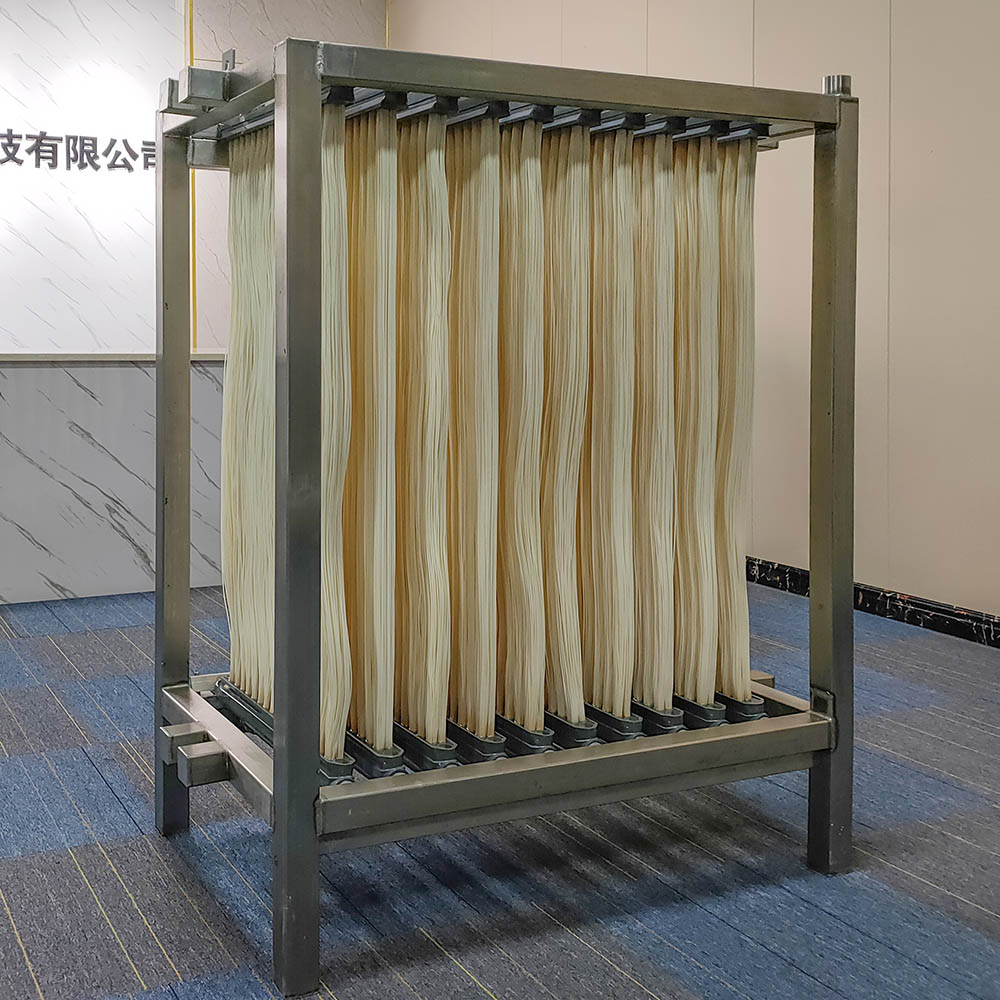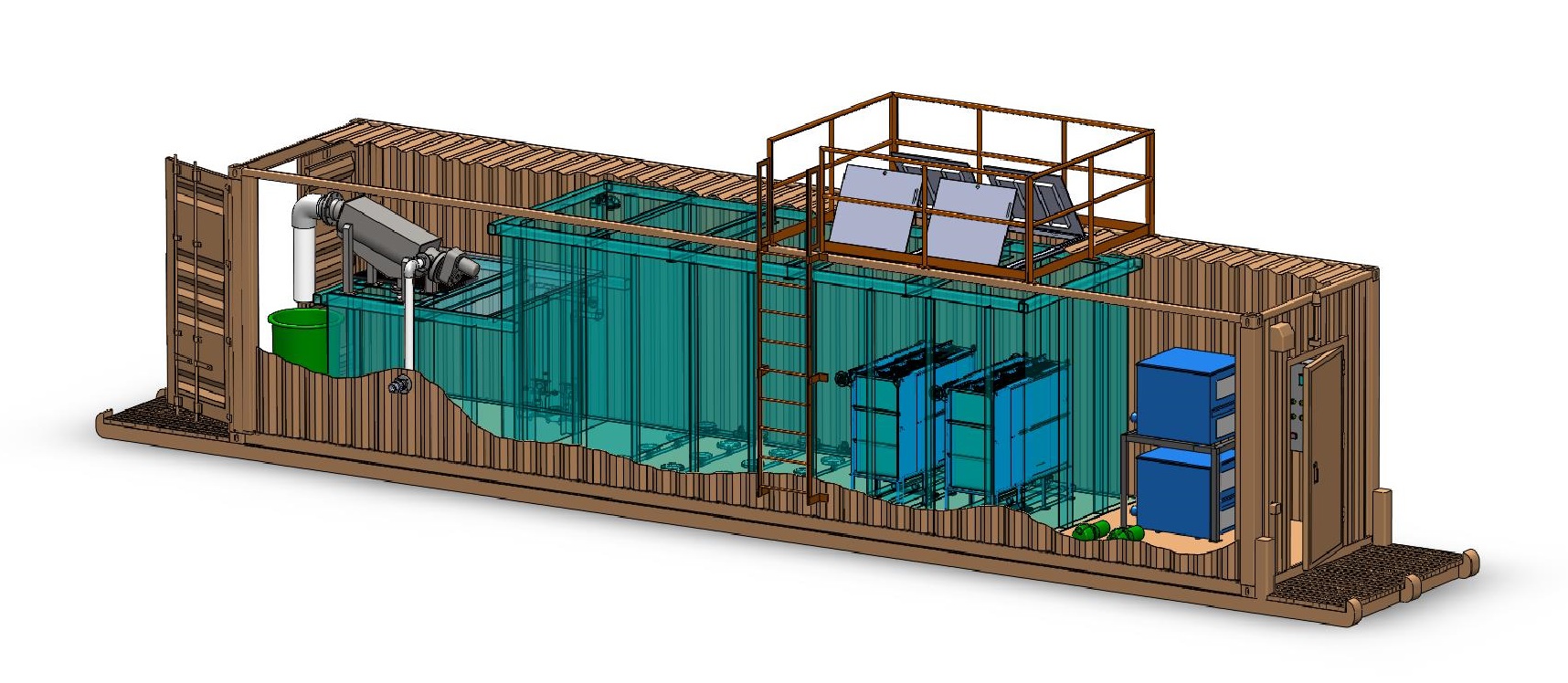Recognizing Membrane Layer Bioreactors: The Future of Wastewater Treatment
Membrane bioreactors (MBRs) represent a significant development in the area of wastewater treatment, incorporating organic processes with sophisticated membrane layer filtration to improve effluent top quality. As global water shortage and rigorous governing frameworks end up being significantly pressing problems, MBR modern technology offers an efficient action via its ability to reduce impact and maximize resource recovery.
What Are Membrane Bioreactors?

The core components of MBR systems include a bioreactor where microbial activity happens and a membrane system that filterings system the blended alcohol. This double capability makes it possible for the synchronised destruction of raw material and solid-liquid splitting up in a solitary action. MBRs can run in both immersed and outside setups, with submerged systems being much more typical because of their small design and operational efficiency.
The adoption of MBR modern technology has actually obtained grip in different applications, ranging from community wastewater treatment to industrial effluent monitoring. MBRs are specifically useful in circumstances where area is stringent or limited effluent top quality requirements should be satisfied. By maintaining a high focus of bacteria within the bioreactor, MBRs improve the degradation of natural contaminants, thus generating greater treatment efficiencies contrasted to typical methods.
Secret Benefits of MBR Technology
The combination of organic therapy with membrane filtering in MBR systems offers numerous benefits that establish it aside from traditional wastewater treatment approaches. Among the primary benefits is the boosted effluent quality. MBRs efficiently eliminate put on hold solids and microorganisms, achieving greater degrees of purification that fulfill strict discharge requirements and facilitate water reuse applications.

An additional significant advantage is the decreased sludge manufacturing. MBR systems generate less excess sludge, resulting in reduced disposal prices and a decrease in environmental impact. The closed nature of the membrane layer system decreases the threat of odor emissions and enhances overall procedure control.
Finally, MBRs are versatile and versatile, making them suitable for various wastewater types, including industrial and community sources. The capability to integrate with sophisticated therapy innovations additionally boosts their performance, making MBRs an encouraging remedy for the future of wastewater monitoring.
Obstacles and Limitations of MBRs
While MBR modern technology supplies countless benefits, it additionally deals with a number of difficulties and restrictions that can influence its widespread adoption. One substantial obstacle is the high resources and functional expenses associated with MBR systems. The initial financial investment for membrane layer products and the required infrastructure can be substantial, making it much less obtainable for smaller sized communities or markets.
Furthermore, membrane fouling continues to be an essential problem that can decrease system performance and rise maintenance demands. Fouling takes place when solids, raw material, or microbes build up on the membrane surface area, resulting in reduced leaks in the structure and needing frequent cleansing or replacement.
An additional restriction involves the intricacy of the technology. MBR systems need competent personnel for procedure and maintenance, which can be an obstacle in regions with restricted technical experience. The disposal of invested membranes provides environmental click resources issues, as the products are typically not eco-friendly and can contribute to lose monitoring challenges.
Last But Not Least, while MBRs can effectively treat a variety of wastewater, they may not appropriate for all applications, particularly those with high concentrations of fats, oils, and oils, necessitating further research study and technology to deal with these restrictions.
Applications of Membrane Layer Bioreactors
In various industries, membrane bioreactors (MBRs) have actually arised as a versatile service for wastewater treatment (Membrane Bioreactor). Their applications extend metropolitan, industrial, and agricultural settings, showcasing their versatility and performance in varied settings. In municipal wastewater treatment plants, MBRs substantially improve effluent top quality, permitting for water reuse and reducing the environmental impact of discharged wastewater
Industrially, MBRs are employed in food and beverage processing, textile manufacturing, and pharmaceutical production, where they efficiently treat high-strength waste streams. Their ability to deal with changing tons and differing pollutant concentrations makes them especially important in these industries. Furthermore, MBRs help with the removal of pathogens, suspended solids, and raw material, adding to compliance with strict discharge policies.
In agriculture, MBRs are increasingly made use of for dealing with farming overflow and livestock wastewater, enabling the recuperation of nutrients for plant food manufacturing. They also aid in the therapy of greywater for watering, promoting lasting water monitoring methods.
The adaptability of MBRs is further evidenced by their assimilation with various other technologies, such as anaerobic food digestion and progressed oxidation processes, boosting total performance and source healing in wastewater treatment systems.
The Future of Wastewater Therapy
Improvements in innovation and an expanding focus on sustainability are shaping the future of wastewater treatment. Membrane layer bioreactors (MBRs) exemplify this change by incorporating biological therapy processes with membrane layer filtering, causing top notch effluent appropriate for reuse. The pattern towards round economic climates is prompting centers to adopt MBRs for their capacity to recover sources, such as water and nutrients, from wastewater.
Developments in membrane layer materials and arrangement are enhancing the performance and longevity of MBR systems, lowering operational expenses and power usage. Smart modern technology integration, consisting of real-time monitoring and automated control systems, is additional maximizing performance and making it possible for predictive maintenance, therefore minimizing downtime.
Additionally, societal expectations and regulative stress are pushing industries and communities to take on even more sustainable methods. Membrane Bioreactor. The next change in the direction of decentralized wastewater treatment services is obtaining grip, permitting localized treatment that minimizes transport costs and energy use
Final Thought
Membrane layer bioreactors (MBRs) stand for a transformative strategy to wastewater therapy, incorporating biological processes with advanced membrane innovation. The benefits of MBRs, consisting of boosted effluent top quality, reduced spatial requirements, and lower sludge production, position them as a viable solution amidst expanding urbanization and stricter ecological laws. Regardless of existing obstacles, the ongoing innovation in membrane layer products and functional approaches assures to strengthen the efficiency and fostering of MBRs, guaranteeing their essential function in the future of lasting wastewater administration.
Membrane bioreactors (MBRs) represent a visit this page noteworthy innovation in the field of wastewater therapy, incorporating organic processes with advanced membrane purification to boost effluent high quality.Membrane bioreactors (MBRs) combine biological therapy procedures with membrane filtration to effectively deal with wastewater.The combination of biological treatment with membrane layer filtering in MBR systems provides numerous benefits that establish it apart from conventional wastewater treatment approaches. Membrane layer bioreactors (MBRs) exemplify this change by integrating organic therapy processes with membrane layer filtering, resulting in premium effluent suitable for reuse.Membrane layer bioreactors (MBRs) represent a transformative approach to wastewater therapy, integrating organic procedures with advanced membrane layer innovation.
Comments on “Membrane Bioreactor as a Sustainable Solution for High-Volume Wastewater Treatment”